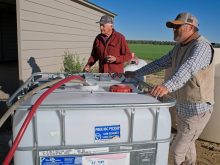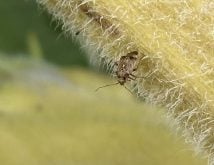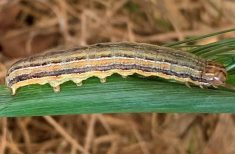Using bait can help you get a better estimate of the scope of your wireworm problem.
Making a bait ball
For one ball:
- Mix one to 1-1/2 cups of oatmeal or wheat flour with two tablespoons of honey and up to 1/2 cup of water to form a ball
- Tie up ball in a mesh bag (e.g. an onion bag) or cheesecloth
- Bury bait balls four to six inches in the soil and mark locations with flags
- Evenly space approximately 20 balls per acre for a reasonable assessment of wireworm presence
- Check baits every four to five days for wireworms
Read Also

Cancer agency reclassifies another herbicide ‘probably carcinogenic’
The WHO’s cancer research agency has now put atrazine, a herbicide well known to corn growers, in the same potential-hazard category where the agency put glyphosate.
Note: Larvae may not be attracted to bait if they have sufficient feed already. Recently tilled soil may also be giving off carbon dioxide, so larvae may not be attracted to bait.
Potato Sampling
- Bury whole potatoes 10 to 15 centimetres deep in marked locations in the spring or early- to mid-August
- Dig potatoes up after a couple of weeks and examine for wireworm tunnels
Note: Monitor fields every year
Soil Sampling
- Mark out areas 50 cm x 50 cm and sieve soil through a screen to a depth of 15 cm
- Repeat in different areas of the field to determine an average number of larvae per square metre
Note: Sampling during germination will increase the likelihood of finding larvae feeding on seedlings
Source: Alberta’s Ministry of Agriculture and Rural Development’s “Agri-Facts: Wireworm.”















